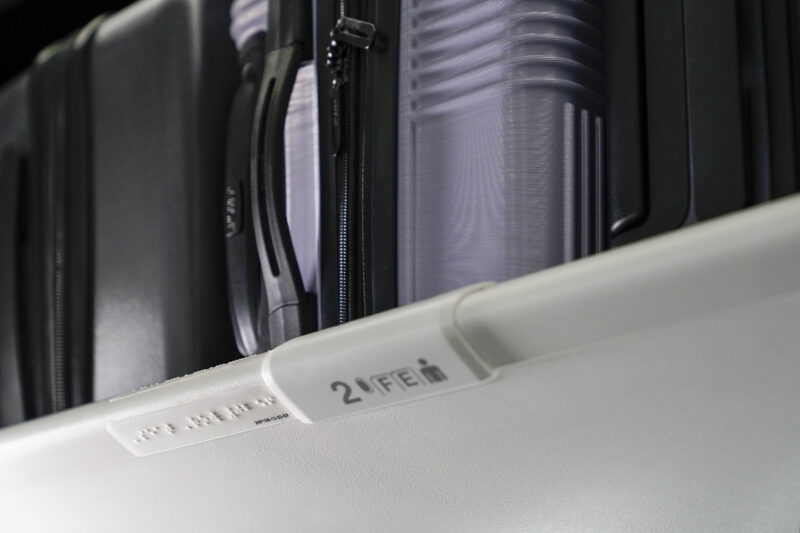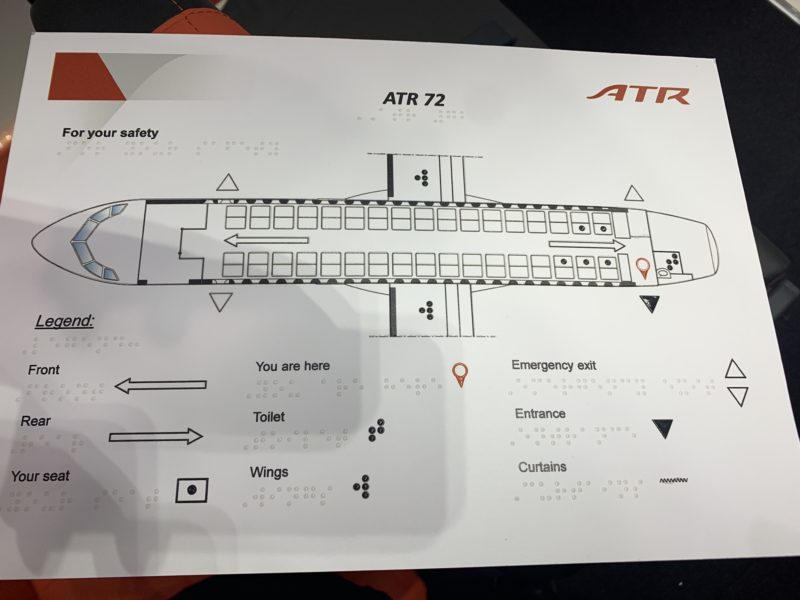This launched last week – but it’s an important step in Accessibility in the Air – with United Airlines rolling out add Braille to its aircraft interiors.

The airline currently has equipped about a dozen aircraft with Braille markings for individual rows and seat numbers as well as inside and outside the lavatories.
United expects to outfit its entire mainline fleet with Braille by the end of 2026.
In addition to adding Braille, United is working with the National Federation of the Blind (NFB), the American Council of the Blind (ACB) and other disability advocacy groups to explore the use of other tactile navigational aids throughout the cabin such as raised letters, numbers and arrows.
The airline has also done work in other sectors, including introducing accessibility options in its mobile app, whilst its Inflight Seatback Entertainment screens offer a range of accessible features such as closed captioning, text-to-speech controls, magnification, explore-by-touch capabilities, audio-described movies, and adjustable and high-contrast text and colour correction.
In Quotes
Linda Jojo, Executive Vice President, Chief Customer Officer for United Airlines said:
“Finding your seat on a plane or getting to the restroom is something most of us take for granted, but for millions of our customers, it can be a challenge to do independently,”
“By adding more tactile signage throughout our interiors, we’re making the flying experience more inclusive and accessible, and that’s good for everyone.”
NFB President Mark Riccobono added
“We applaud United for taking an important step toward making its aircraft more accessible to blind passengers,”
“The flight experience is often frustrating for a number of reasons, one of which is the amount of information that is available exclusively through printed signs and other visual indicators. We hope to continue working with United to explore additional ways to make flying more accessible and less stressful for blind passengers.”
ACB Interim Executive Director Dan Spoone concluded:
“United is taking additional steps to create an accessible airline passenger experience through braille signage,”
“We appreciate the airline’s continued exploration of additional in-flight navigational aids like large print and tactile indicators, and we encourage all airlines to follow United’s lead in making air travel more inclusive for the blind and low vision community.
Small steps
We’ve seen work with braille and accessibility with demonstrations in the past. ATR demonstrated a safety card concept alongside the audio loop in 2019.

ATR72 safety card with braille markings – Image, Economy Class and Beyond/ATR Aircraft.
We’ve also seen airlines adopt solutions for IFE accessibility, such as BlueBox’s offering on Virgin.
Steps like these open up the world of travel to many more people, beyond just navigating them to the seat – it allows people to be aware and independent.
There’s a long way to go (especially for wheelchairs as we have covered), but it’s a start – and something we need to see more of in the air.
In Europe, the demand is greater with Persons with Reduced Mobility legislation (covered in EU and UK Law), with legislation approved to drive accessibility forward.
And it is something that airlines, trains, ferries or any mode of transport must push forward, to open up travel to all.
Welcome to Economy Class and Beyond. Your no-nonsense guide to network news, honest reviews, in-depth coverage, unique research, as well as the humour and madness I only know how to deliver.
Our Social Media pool has expanded. You can find us across most networks as @economybeyond on Twitter, Mastodon, BlueSky, Threads and Instagram too!
Also, remember that we are part of the BoardingArea community, bringing you the latest frequent flyer news from around the world.